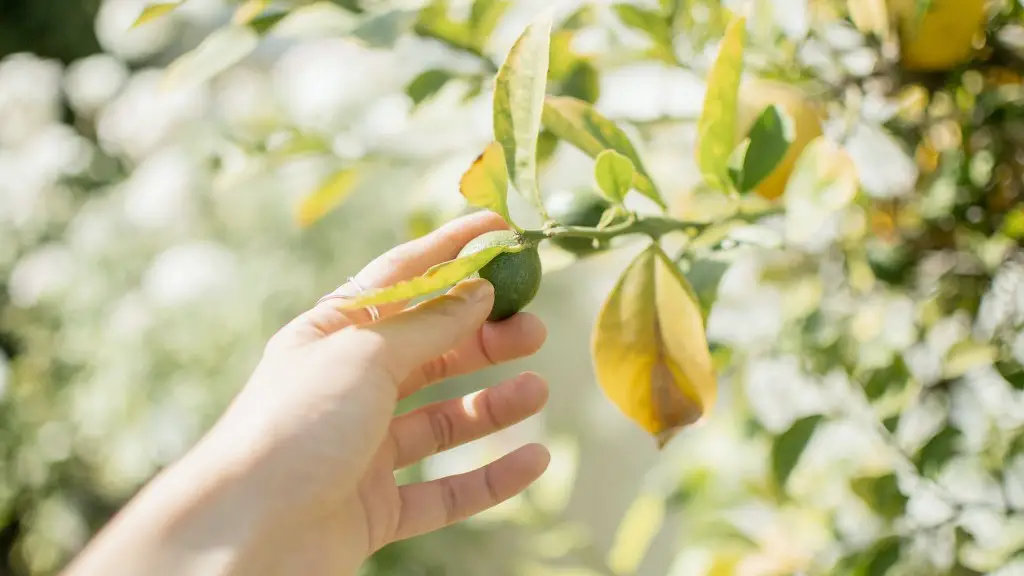CHOOSING THE RIGHT PALM TREE
Palm trees are tropical plants, so when you’re choosing the type of palm tree to replant in a pot, you’ll need to consider a few factors. According to gardening experts, if you’re replanting a palm tree in a pot, you’ll want to make sure you choose a tropical, frost-sensitive palm tree for the best results. Determine the type of soil needed for the particular palm tree you wish to replant. Some palm trees will require a light and sandy soil while others require a rich and loamy soil.
FOLLOWING PROPER PLANTING GUIDELINES
The process of replanting a palm tree in a pot starts with following the planting instructions. Invest in a pot with a drainage hole at the bottom so the plant won’t be waterlogged with too much moisture. Experts recommend making the container large enough to hold the tree’s roots. Furthermore, they suggest not planting a palm tree in too small of a pot, as it could stunt the tree’s growth or possibly cause it to die. A palm tree needs extra room to grow and spread its roots, so make sure the pot is large enough to allow for that.
PREPARING THE SOIL
Proper soil preparation is key for a healthy potted palm tree. An important aspect of soil preparation is to test the pH level of the soil. Purchase a soil pH testing kit to determine the acidity/alkalinity of the soil. This can be found at most gardening stores.Experts recommend checking your soil pH several times a year, as regular soil preparation is necessary to maintain optimal growth and development of the tree.
FERTILIZING THE PLANT
Fertilizing a potted palm tree is important for providing it with the nutrients it needs to grow and thrive. Fertilizing once per month during the spring and summer months is recommended for optimal growth. Each soil preparation and fertilizer type will differ, so look for a fertilizer specific to the soil and palm tree type you are using for replanting.
WATERING THE PLANT
One of the most important aspects of replanting a palm tree in a pot is proper watering. Depending on the soil type, correct watering of the tree is essential in order to keep the tree healthy. Over-watering can lead to root rot, while under-watering can restrict root growth and stunt growth. Check the soil multiple times per week and make sure it’s not overly soggy. If you insert your finger into the soil and it feels dry, then it is time to water the palm tree.
DO’S AND DONT’S IN PALM TREE REPOTTING
When replanting a palm tree in a pot, there are some important ‘do’s and don’ts’ to keep in mind. It is important to ensure that the container for replanting the palm tree is large enough to accommodate the tree’s root system. The pot should also have sufficient drainage holes at the bottom in order to prevent waterlogging. Moreover, it is important to make sure that the potting soil that is being used is appropriate and well-draining, as this will help to promote the growth and health of the tree and help to ensure that it does not become overly dry or overwatered.
PRUNING THE PALM TREE
Along with proper soil and watering, it is important to prune the tree regularly. Pruning helps to keep the tree healthy by removing dead or damaged fronds or branches. It also helps to promote air circulation, which helps to prevent disease. Pruning is most frequently done during the summer months, but can be done any time of year to remove unruly growth.
SEASONAL CARE IN PALM TREE REPOTTING
SEASONAL CARE IN PALM TREE REPOTTING
Taking care of a potted palm tree during all seasons requires some effort, but it is important for the tree’s health and growth. During the summer months, make sure to water the plant almost daily. This can help to keep the tree cool and prevent overheating. During the winter months, make sure to check the soil moisture levels more frequently and water only when necessary. In addition, it is important to make sure the tree gets enough sunlight and is not exposed to strong wind or cold conditions.
PEST MANAGEMENT IN REPOTTING PROCESS
One of the most common problems with potted palm trees is pest infestations. These can be caused by insects such as mealybugs, beetles, and aphids. A thorough inspection should be done of the tree and surrounding soil to identify any kind of pest infestation. If pests are found, experts recommend treating the tree with a pesticide or insecticidal soap.
PREVENTING DISEASE IN PALM TREE REPOTTING
Although regular inspection for pests can help to reduce infestations, diseases can also plague a potted palm tree. To prevent diseases from taking hold, make sure to follow proper watering and pruning guidelines. In addition, make sure to fertilize the tree every month during the warm seasons and use a fungicide or insect control solutions as needed.
IDENTIFYING DISEASES
It is important to recognize symptoms of diseases in a potted palm trees. Common symptoms to watch out for are yellow or brown foliage and spots on the leaves. Other signs of disease include wilting, stunted growth, and leaf shedding. If any of these symptoms are present, experts recommend consulting a professional to inspect the tree and to determine the cause of the disease.
MANAGING POT SIZE FOR PALM REPOTTING
When replanting a palm tree in a pot, it is important to choose a pot that is large enough to accommodate the tree’s root system. Make sure the pot has a drainage hole at the bottom in order to prevent waterlogging. The pot should also have ample space for the tree’s extensive root system. As the tree grows, it may need to be replanted in a larger pot.
MAINTAINING A HEALTHY SOIL
It is important to maintain the soil in a healthy state in order to promote the growth and development of the tree. Proper pH level testing should be done regularly and soil should be lightly fertilized in order to provide the tree with the nutrients it needs to grow. Make sure to use a fertilizer that is specific for the type of soil and palm tree type you are using.
PROMOTING GROWTH WITH REGULAR WATERING
To ensure the tree’s health and growth, it is important to water the palm tree regularly. Check the soil moisture level multiple times a week and provide adequate water if it is dry. Experts recommend watering the tree at least once a week to prevent it from becoming overly dry or overwatered.
PREVENTING DAMAGE FROM FROST
When replanting a palm tree in a pot, it is important to take steps to prevent damage from frost. This is especially true if you live in a place with cold winters, as a frost can damage the tree’s leaves. Experts recommend wrapping the pot with bubble wrap and insulating it with burlap or hay in order to keep the tree safe from any cold temperatures.
REPLANTING THE PALM TREE
Replanting a palm tree in a pot is not a difficult task and can be done successfully with the right tools, knowledge, and effort. Make sure to follow all the steps outlined in this article and you will be on your way to having a healthy and thriving potted palm tree.



